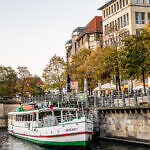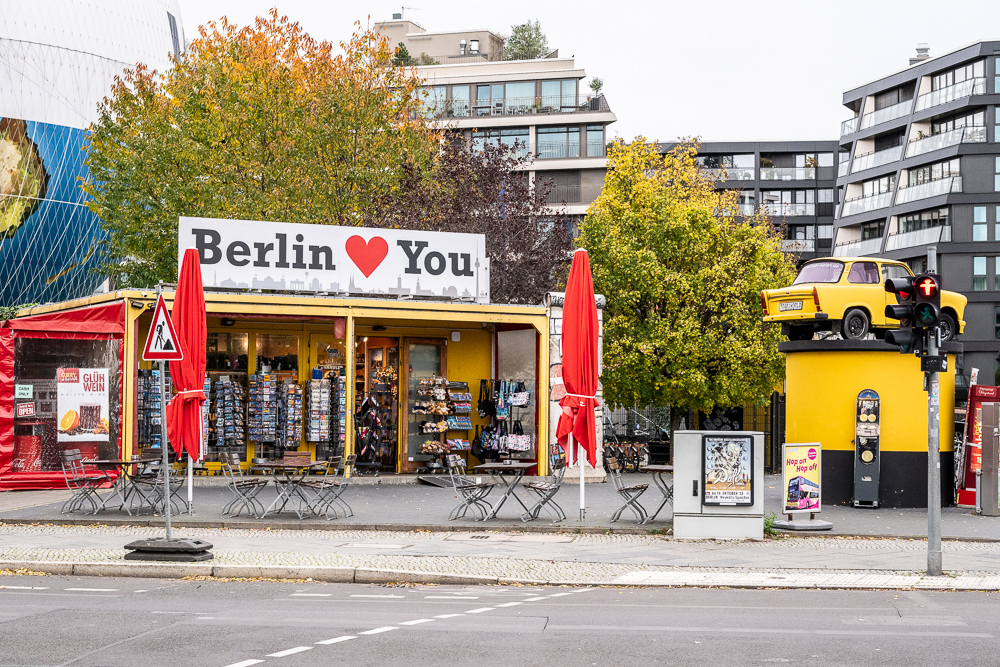
Insider Tours Berlin's "Berlin: Highlights of Berlin Walking Tour" from Get Your Guide, was one of the best, most comprehensive tours I've ever experienced
When I arrived at the Insider Tours Berlin meeting point, I was quickly introduced to Jasper, our tour guide. Within quick order of our start, he began to tell us the history of Berlin.
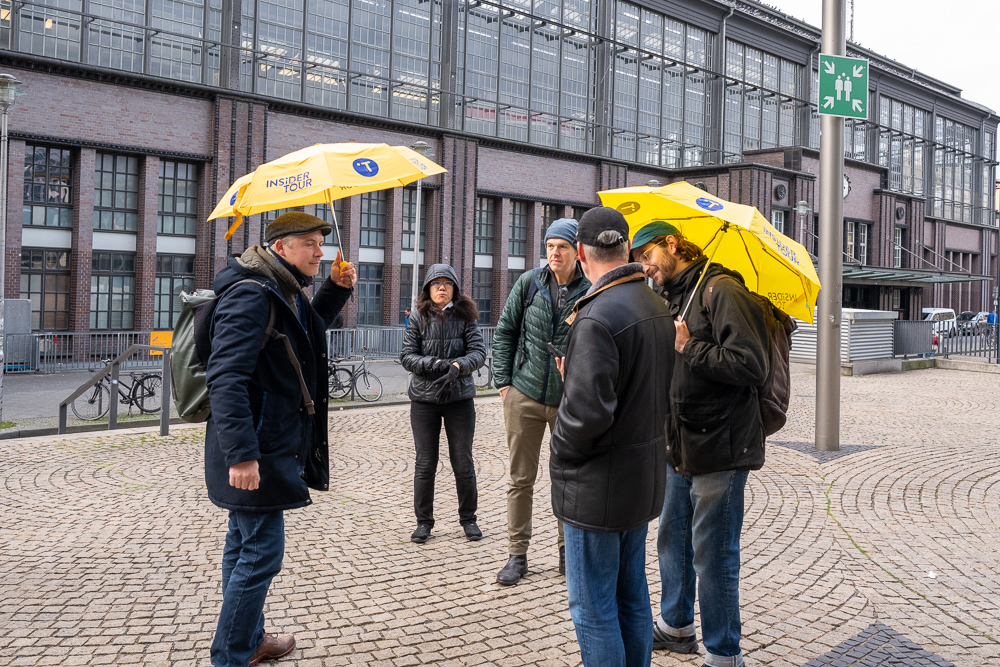
I was surprised to learn that Berlin was founded only 800 years ago. I say only because if you look at other European countries like London and Paris and even Rome – Berlin is rather young.
We walked the streets to MUSEUM ISLAND. It was visually brilliant to behold. Museum Island, located in the heart of Berlin, Germany, is a UNESCO World Heritage site that boasts a rich history as a cultural and intellectual hub. The island is home to five world-renowned museums, each housed in a unique architectural masterpiece. The Altes Museum, the Neues Museum, the Alte Nationalgalerie, the Bode Museum, and the Pergamon Museum collectively form this extraordinary ensemble of cultural institutions.
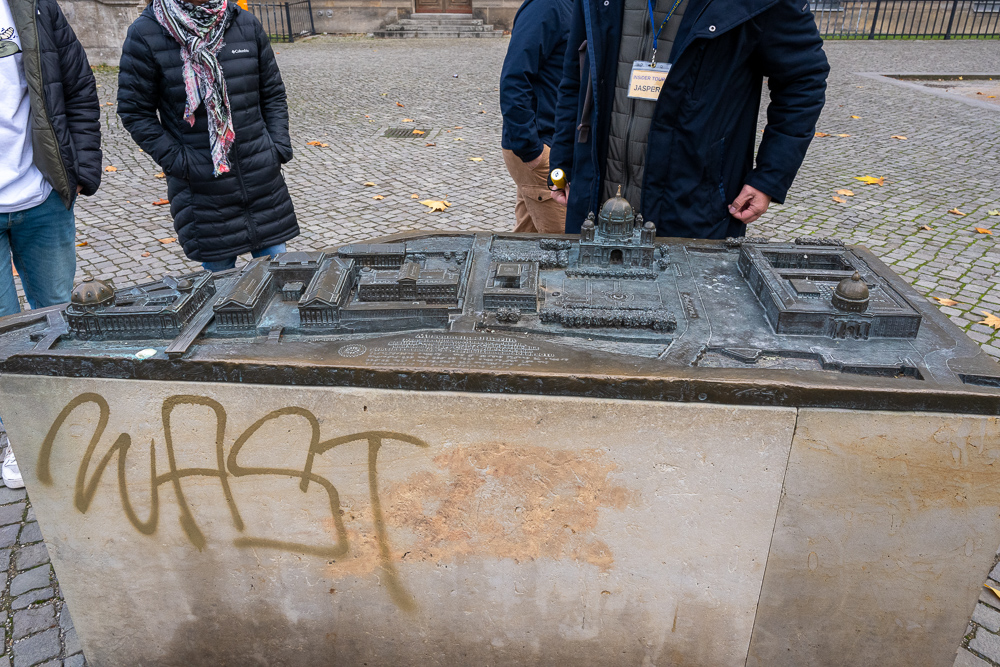
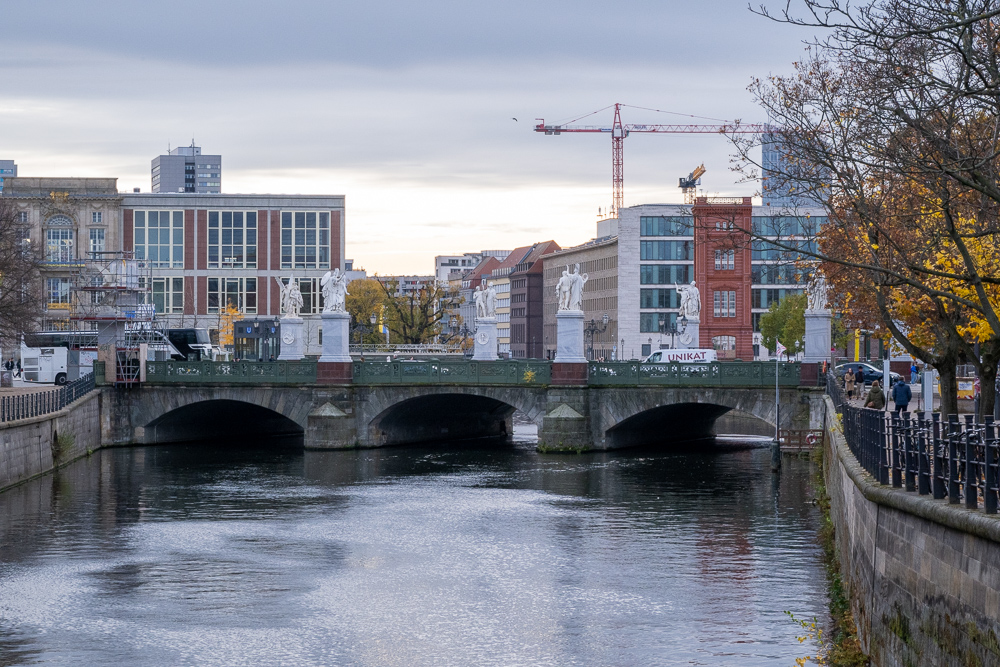
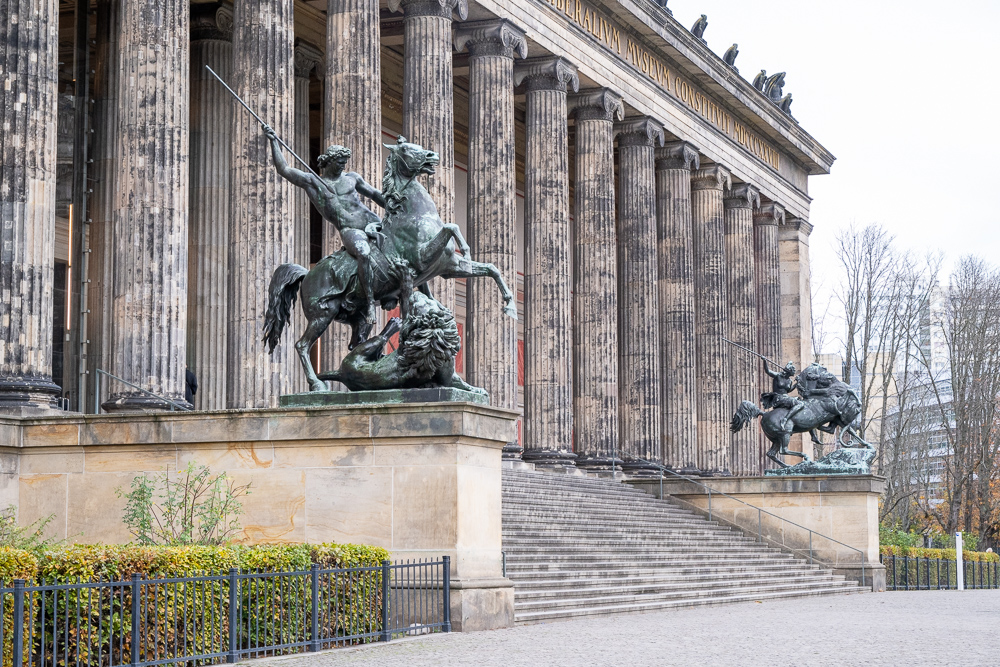
The history of Museum Island can be traced back to the early 19th century when King Frederick William III of Prussia envisioned creating a cultural and educational district on the island. The construction of these museums began in the mid-19th century and continued over several decades. Despite being heavily damaged during World War II, the museums were meticulously restored in the post-war period, with efforts continuing into the 21st century. Museum Island stands as a testament to the enduring cultural heritage of Berlin, showcasing an unparalleled collection of art and artifacts that span centuries and civilizations.
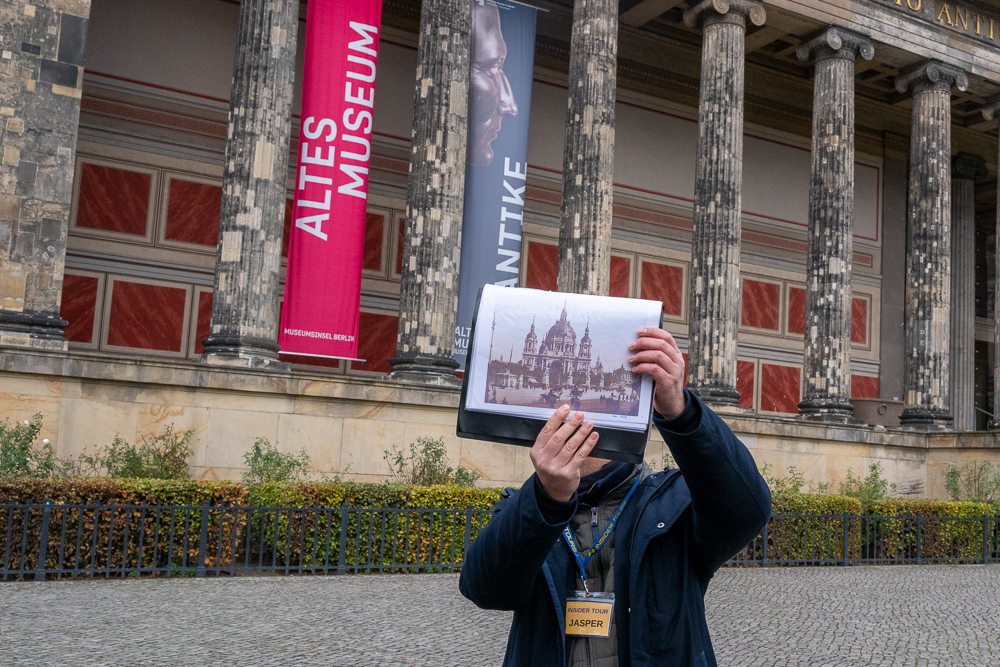
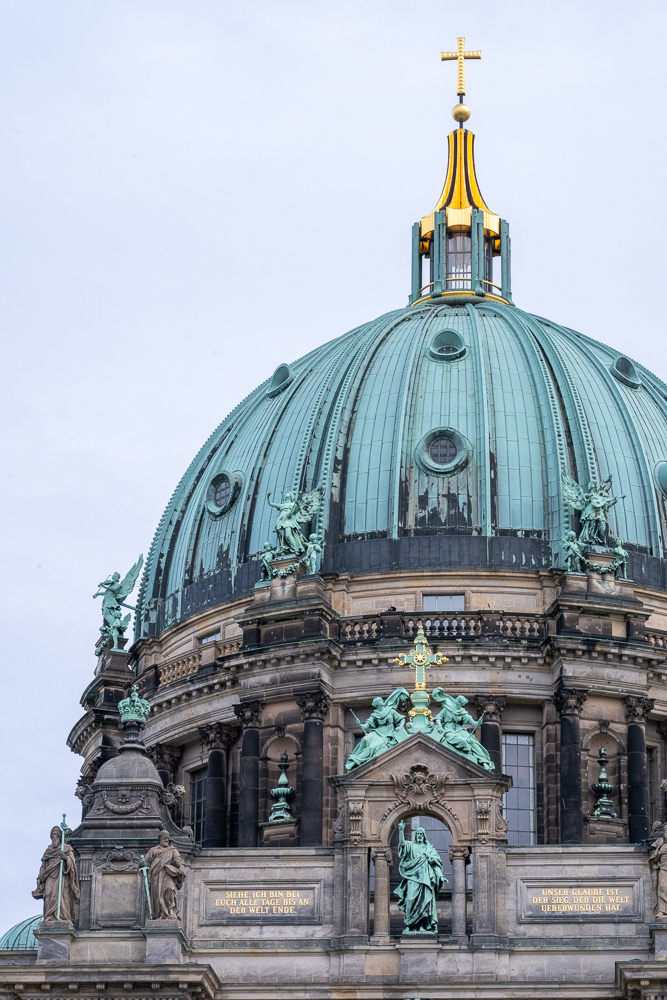
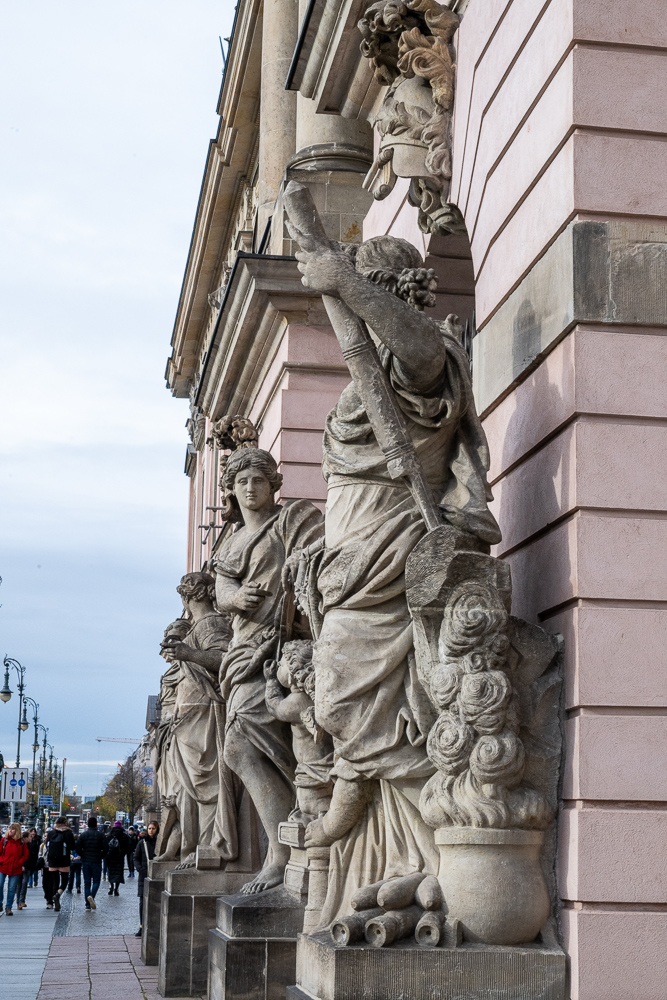
We then walked to NEUE WACHE (Central Memorial of the Federal Republic of Germany to the Victims of War and Tyranny), which was incredibly moving. I was emotional as Jasper explained its history to us. NEUE WACHE, located in Berlin, Germany, is a historic building that has undergone various transformations throughout its existence. Originally constructed in the early 19th century as a guardhouse for the troops of the Crown Prince of Prussia, it later served different purposes under different regimes. The building’s most significant transformation occurred during the Nazi era when it was converted into a memorial for the victims of war and tyranny.
After World War II, NEUE WACHE underwent further changes, reflecting the political shifts in Germany. In the 1960s, the building was redesigned to house the Central Memorial of the Federal Republic of Germany for the Victims of War and Tyranny. The central feature of the memorial is an enlarged version of Käthe Kollwitz’s sculpture “Mother with her Dead Son,” emphasizing the human toll of war. NEUE WACHE continues to be a poignant symbol of remembrance and reflection, embodying Germany’s commitment to acknowledging the victims of war and tyranny throughout its complex history.
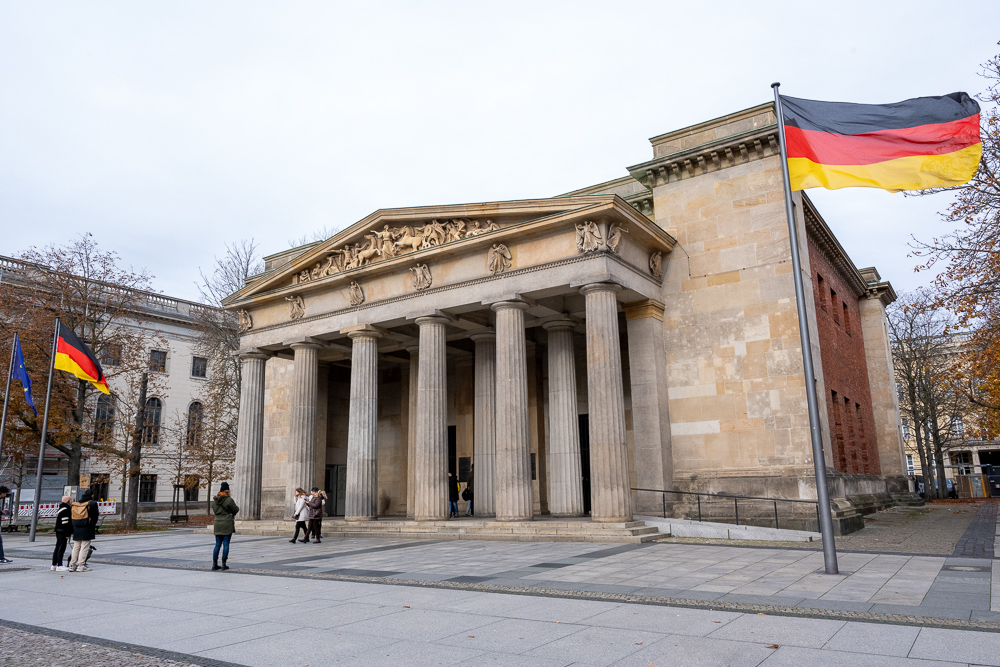
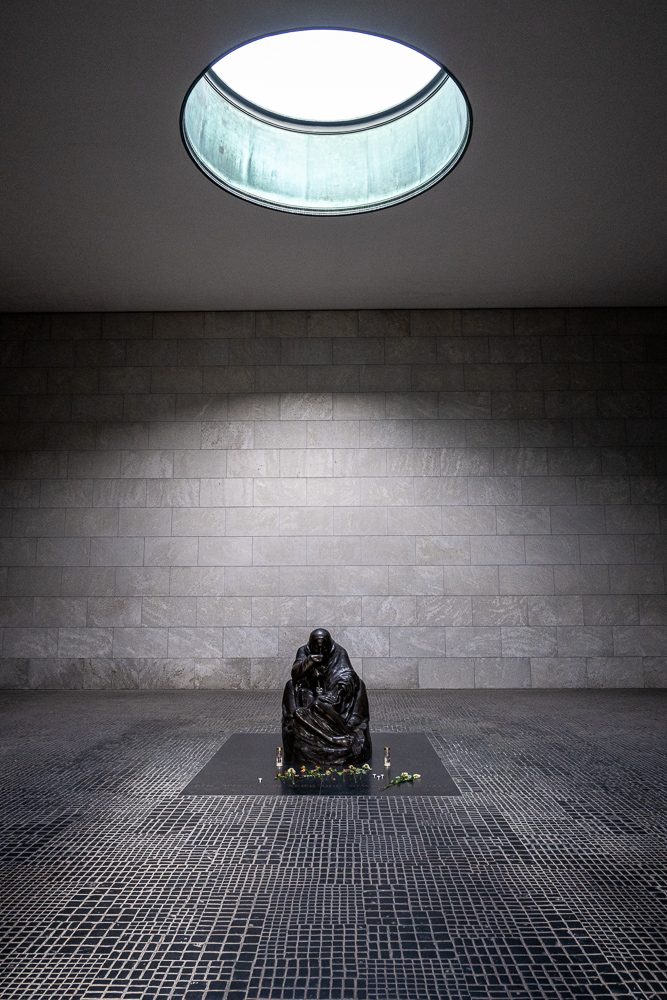
Next up was the UNIVERSITY OF BERLIN and the BEBELPLATZ, which was the site of the Nazi book burning. Bebelplatz, situated in the historic center of Berlin, Germany, holds a significant place in the city’s history, particularly due to the infamous book burning that took place there during the early years of Nazi rule. The square was named after August Bebel, a prominent Social Democratic leader in the late 19th and early 20th centuries. Bebelplatz is surrounded by notable buildings, including the State Opera, St. Hedwig’s Cathedral, and Humboldt University.
On May 10, 1933, the square gained notoriety as the site of the Nazi-orchestrated book burning, where thousands of books deemed “un-German” or contrary to Nazi ideology were publicly set on fire. The event marked a dark chapter in the suppression of intellectual freedom and cultural diversity under the Nazi regime. Today, a memorial designed by Micha Ullman, consisting of an underground empty library with empty shelves, serves as a somber reminder of the book burning and the importance of safeguarding intellectual freedom and human rights. Bebelplatz stands as a symbolic space that reflects both the city’s cultural heritage and the need to confront and remember the atrocities of the past.
I still think of the hundreds of books that were burned and how so much history was lost.
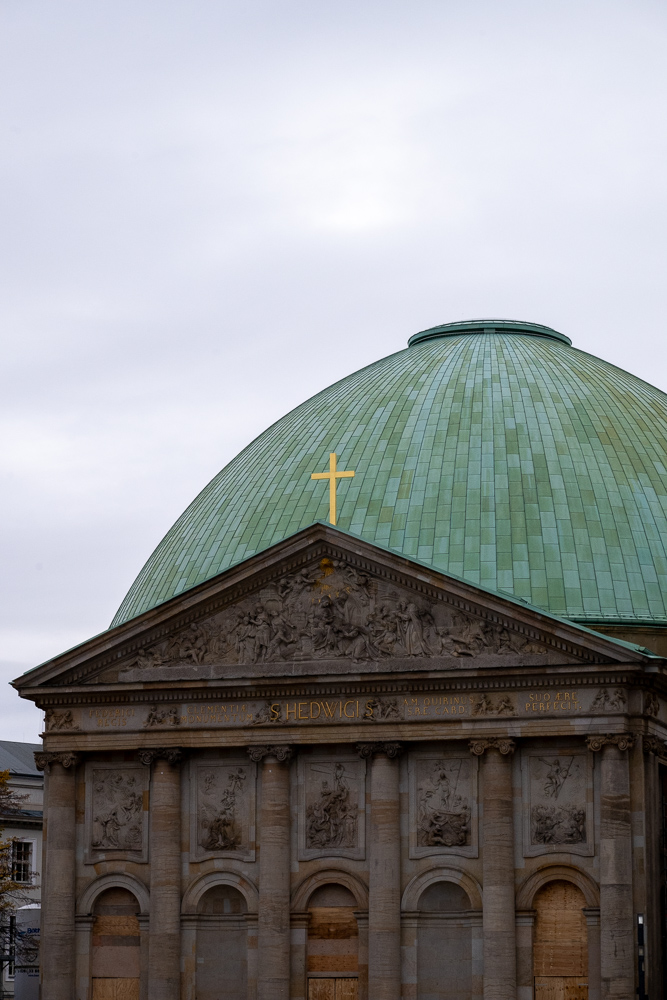
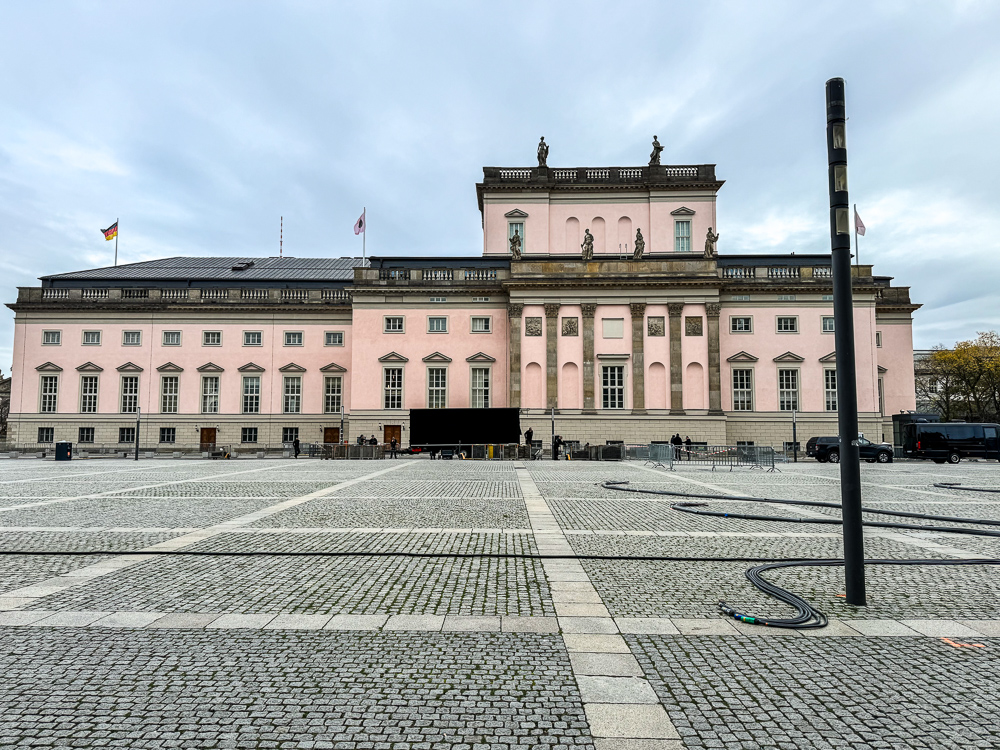
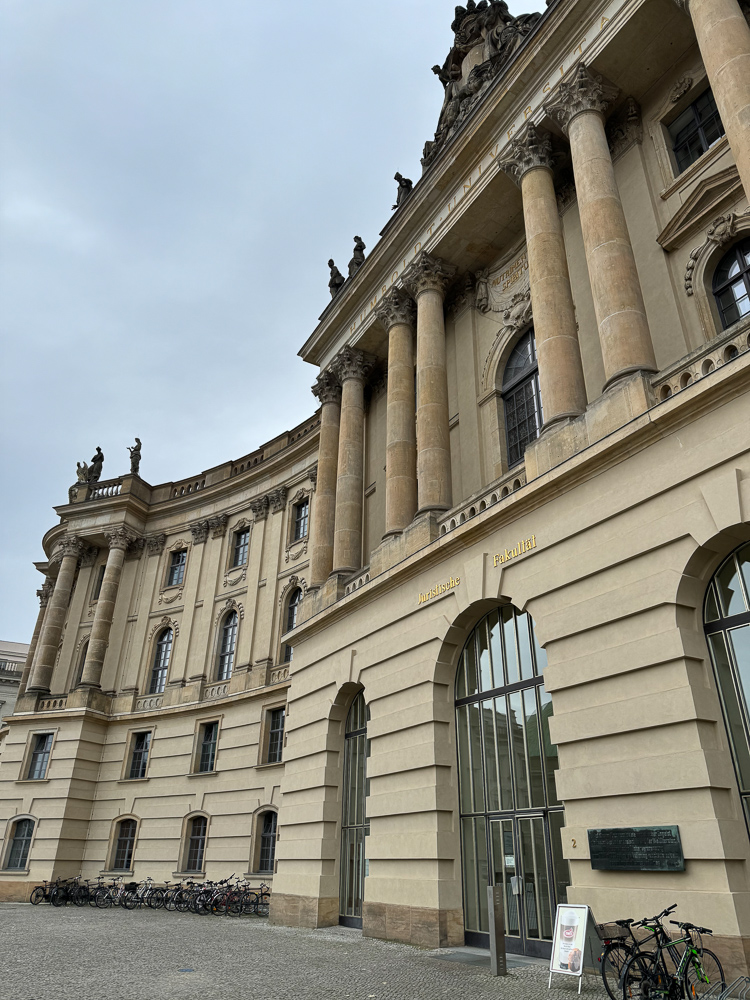
Walking through Berlin was – incredible. As we walked, Jasper continued his history lessons about Berlin. The city has a rich and complex history that spans centuries. The city’s origins can be traced back to the 13th century when it emerged as a trading and cultural hub on the River Spree. Over the years, Berlin played a central role in the Prussian Empire and later became the capital of the German Empire in the late 19th century.
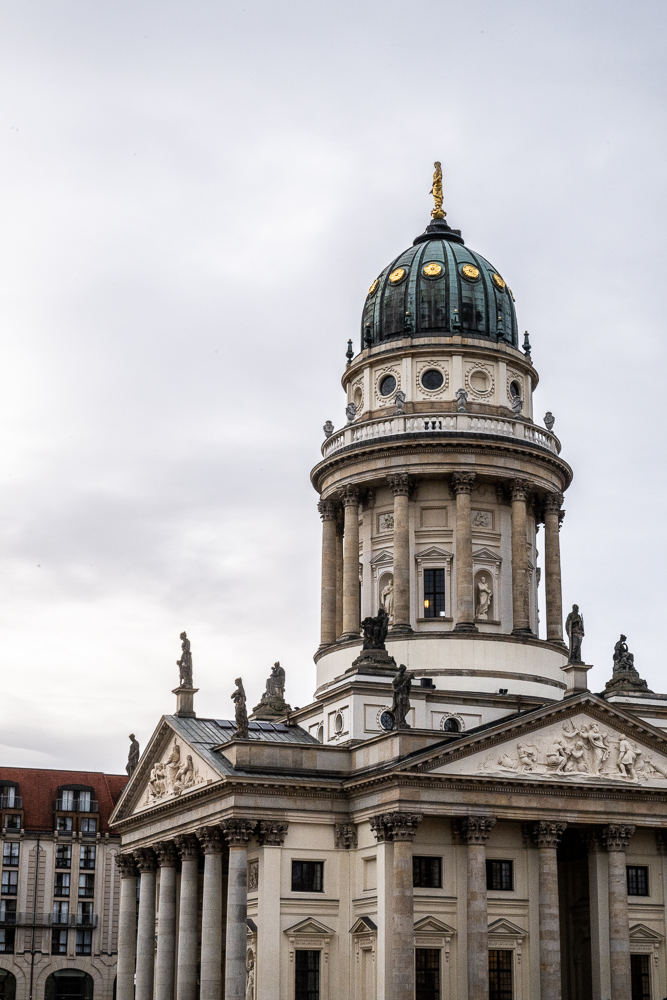
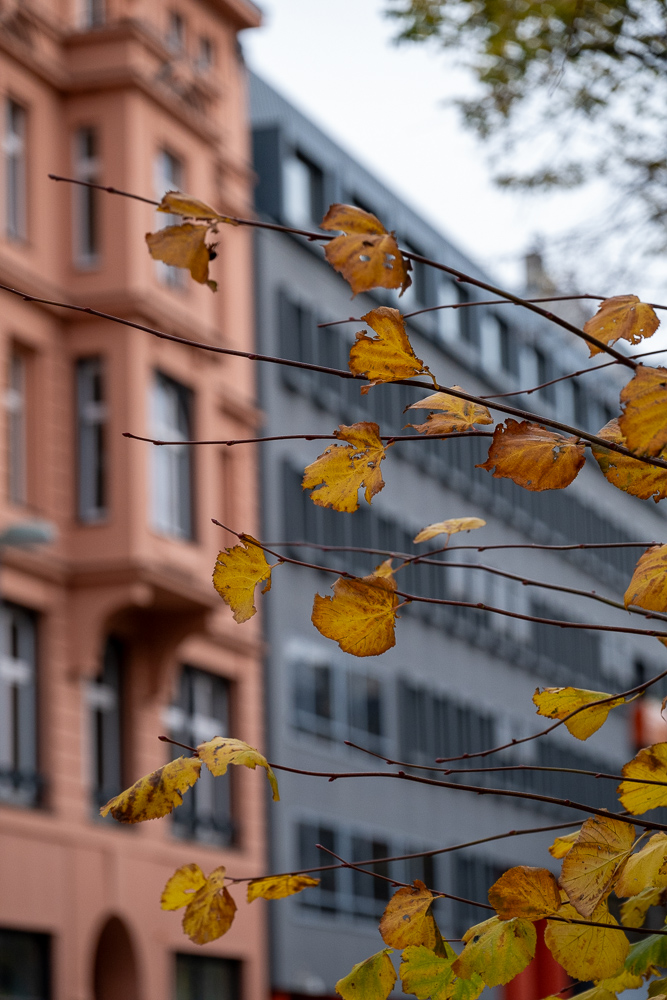
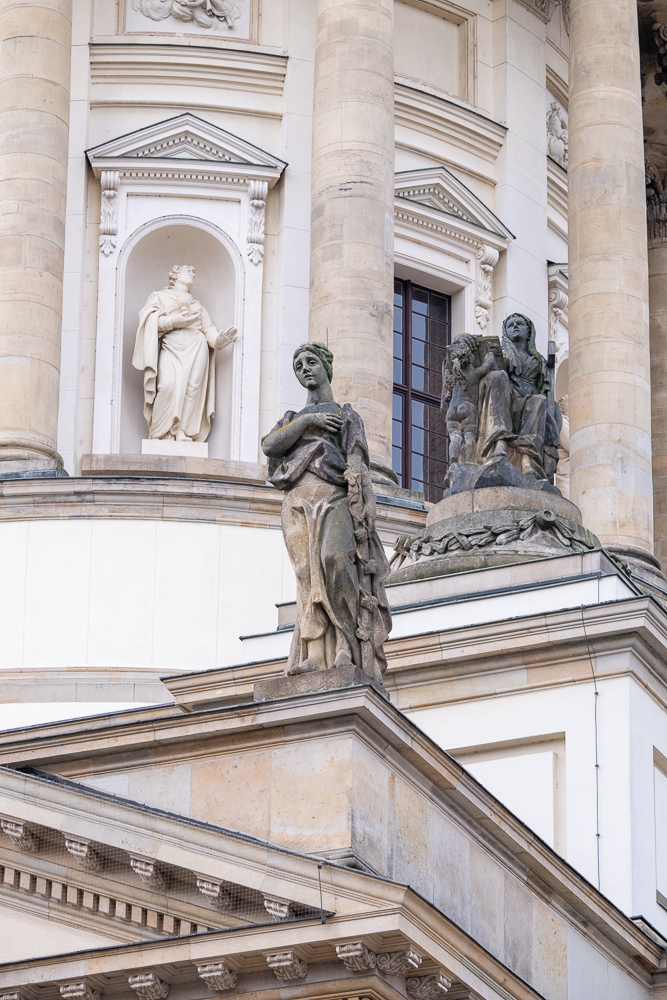
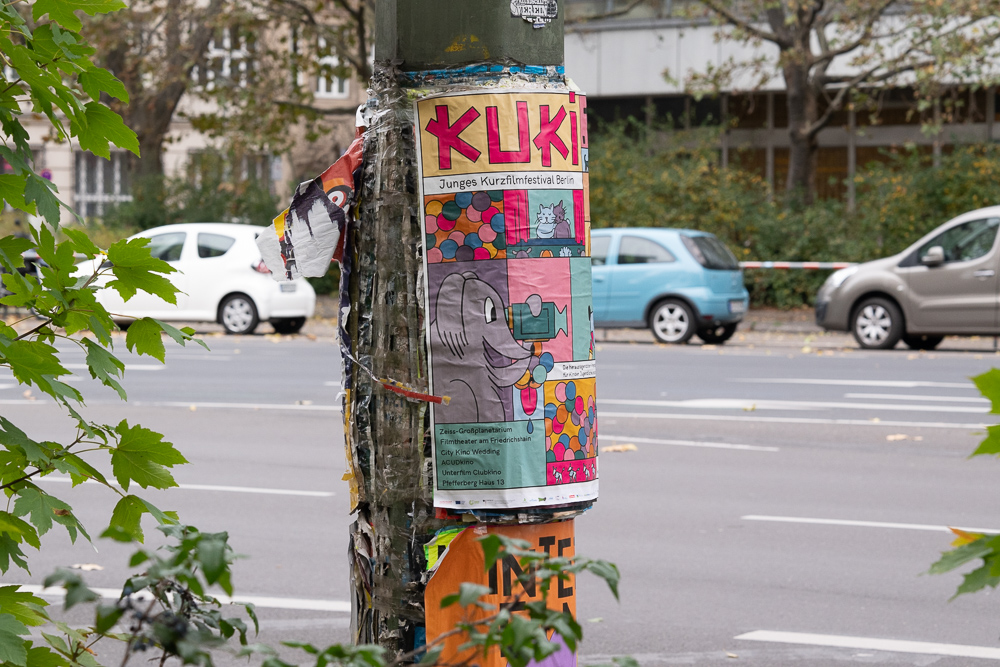
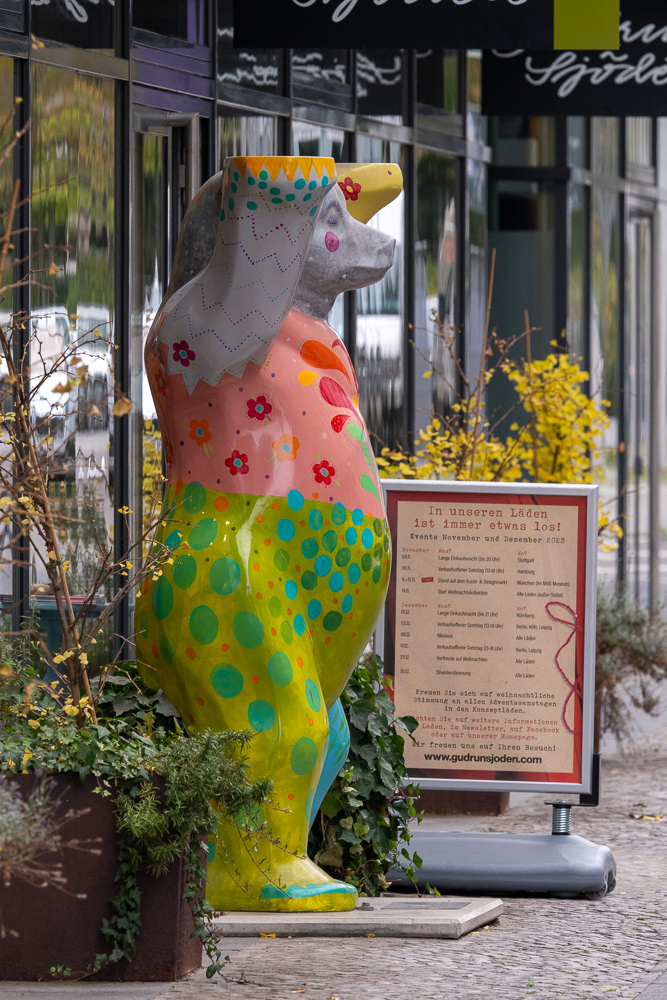

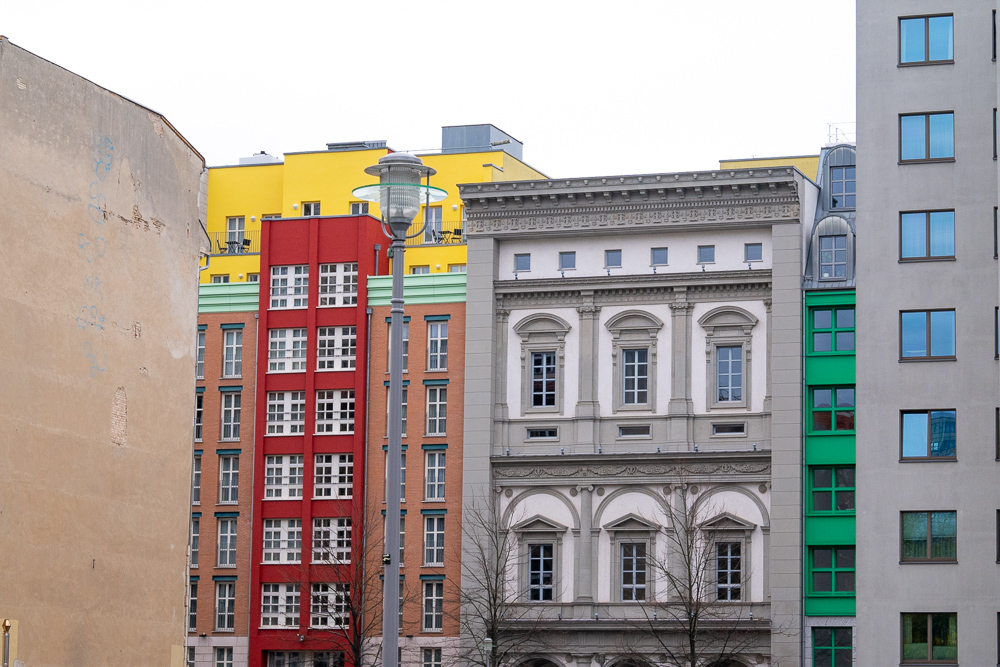
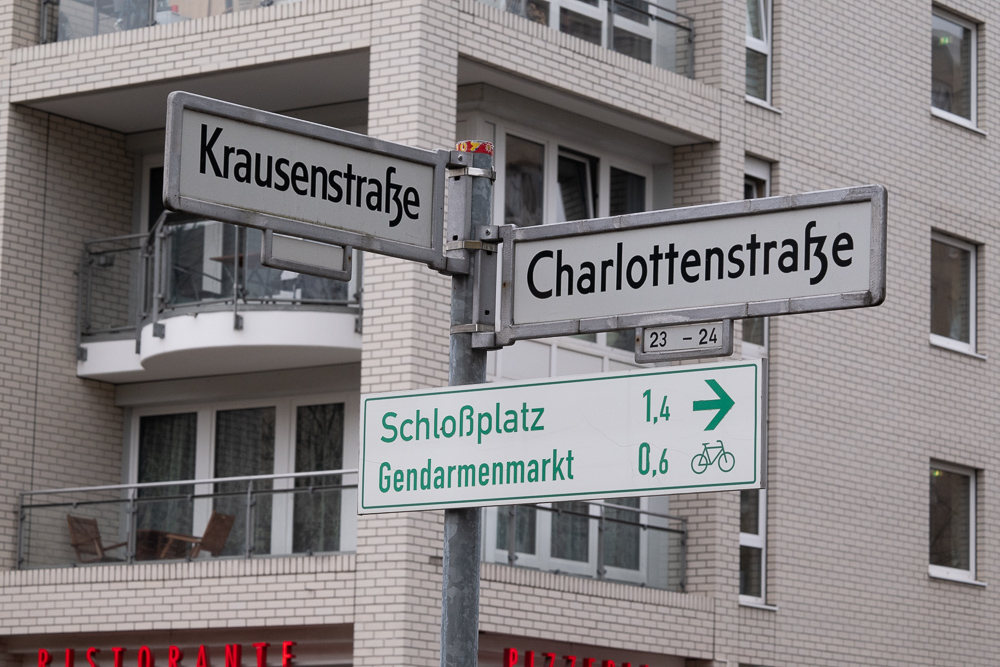
We walked to CHECKPOINT CHARLIE, one of the main dividing points of East and West Berlin. Located in the heart of Berlin, Checkpoint Charlie was a crucial border crossing point between East and West Berlin during the Cold War. Established in 1961, after the construction of the Berlin Wall, Checkpoint Charlie became one of the most iconic symbols of the divided city. This checkpoint served as the only crossing point for foreigners, diplomats, and military personnel moving between the American and Soviet sectors. The name “Charlie” derived from the third letter in the NATO phonetic alphabet.
The checkpoint gained international significance during the Cold War’s tense stand-off between the United States and the Soviet Union. It became a focal point for espionage activities and high-stakes encounters. The standoff in October 1961, when American and Soviet tanks faced each other at Checkpoint Charlie, was a particularly intense moment in Cold War history. After the reunification of Germany in 1990, Checkpoint Charlie lost its original function, and today, a replica of the original checkpoint booth stands as a historical monument at the site, serving as a reminder of the city’s tumultuous past and the enduring tensions of the Cold War era.
It felt incredible to stand in the presence of so much history.
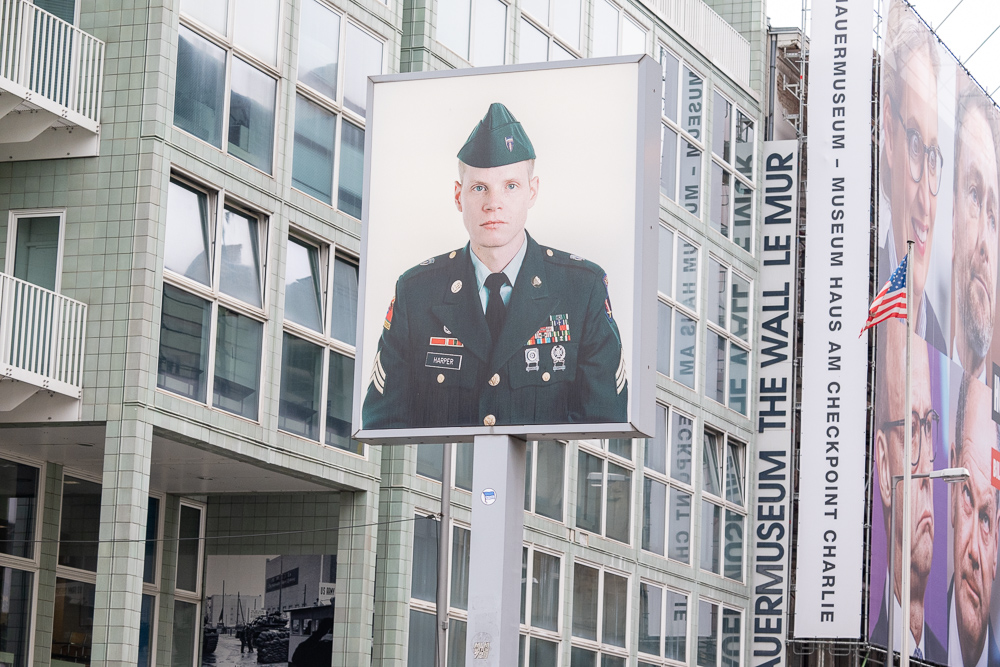
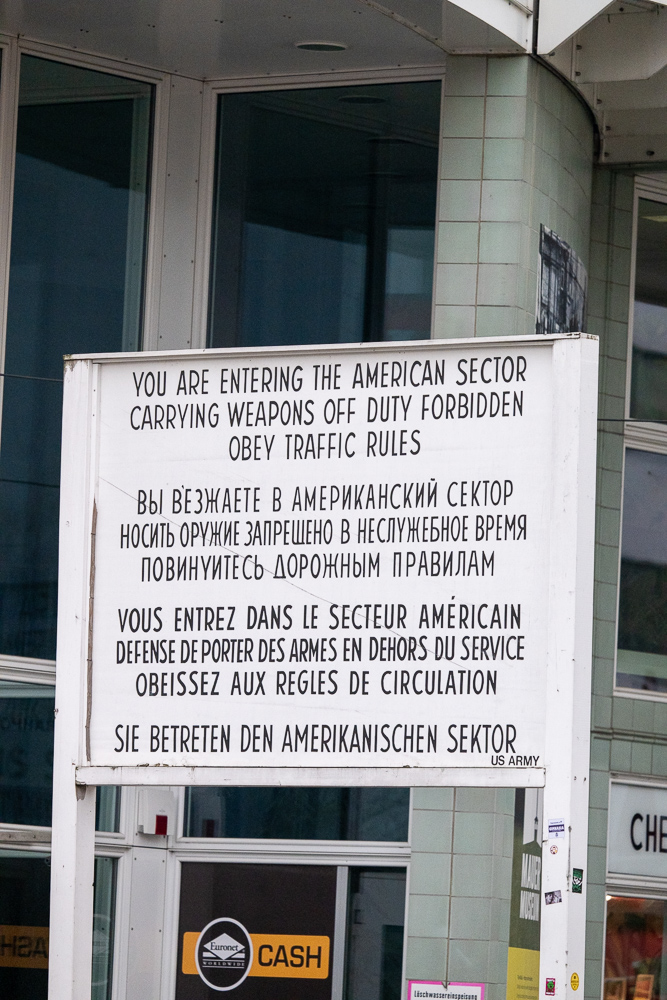
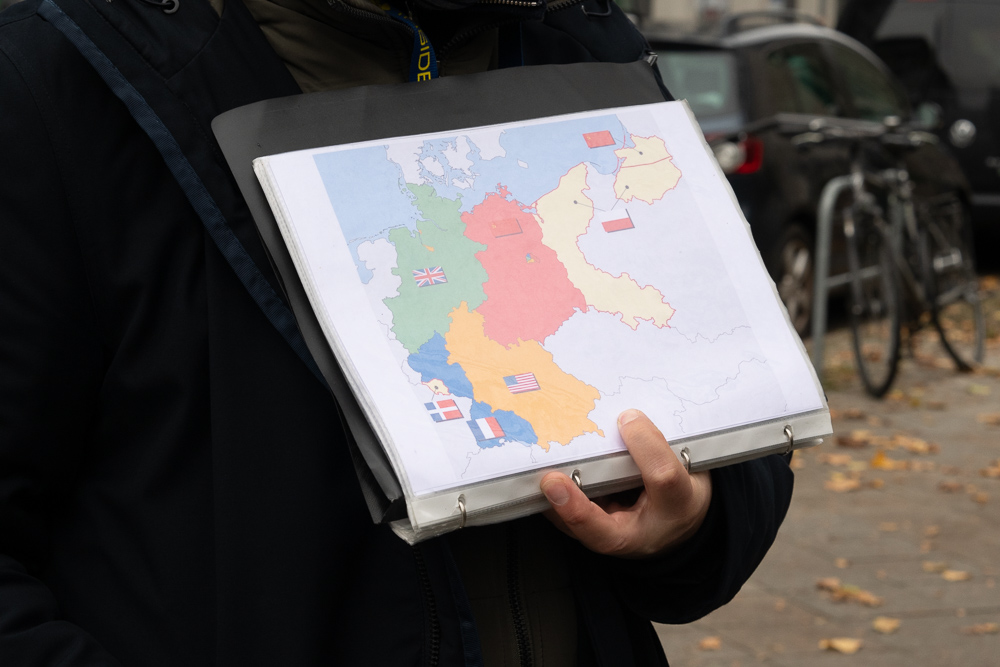
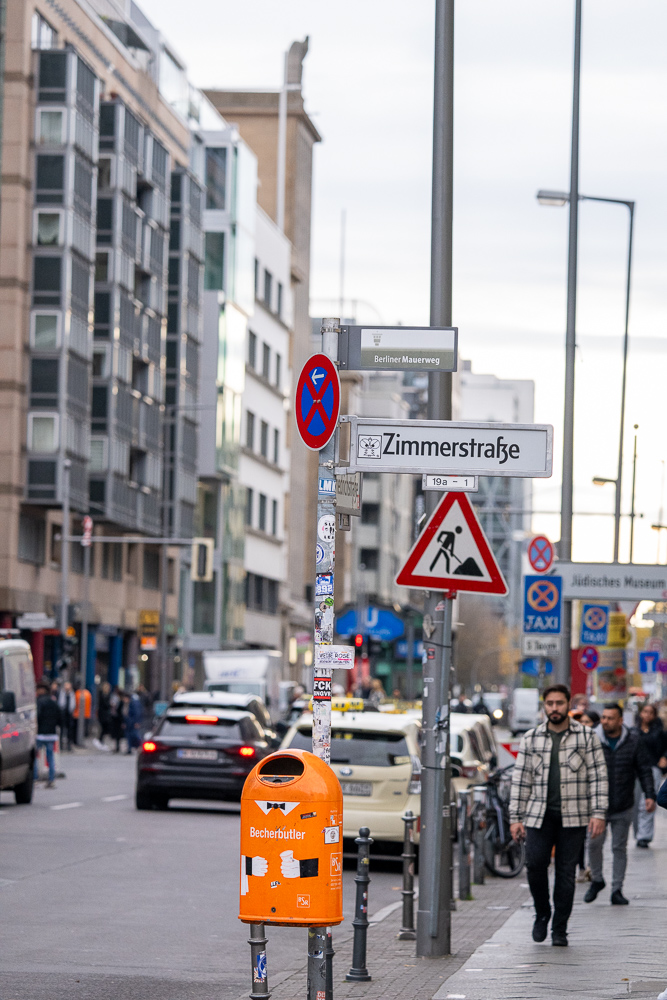

After a short break, we walked to NIEDERKIRCHNERSTRAßE 8, the GRENZMAUER 75 (Border Wall 75) and the TOPOGRAPHIE DES TERRORS. As light rain fell, Jasper told us about the history of how the Berlin Wall divided Berlin and the after effects. I didn’t know that 20% of the escapees from East Berlin to West Berlin were border guards. Plus, the amount of people shot at the Berlin Wall is known to be 140. However, the amount of people killed at the German German border as a whole? 356. It’s an incredible fact to reflect on.
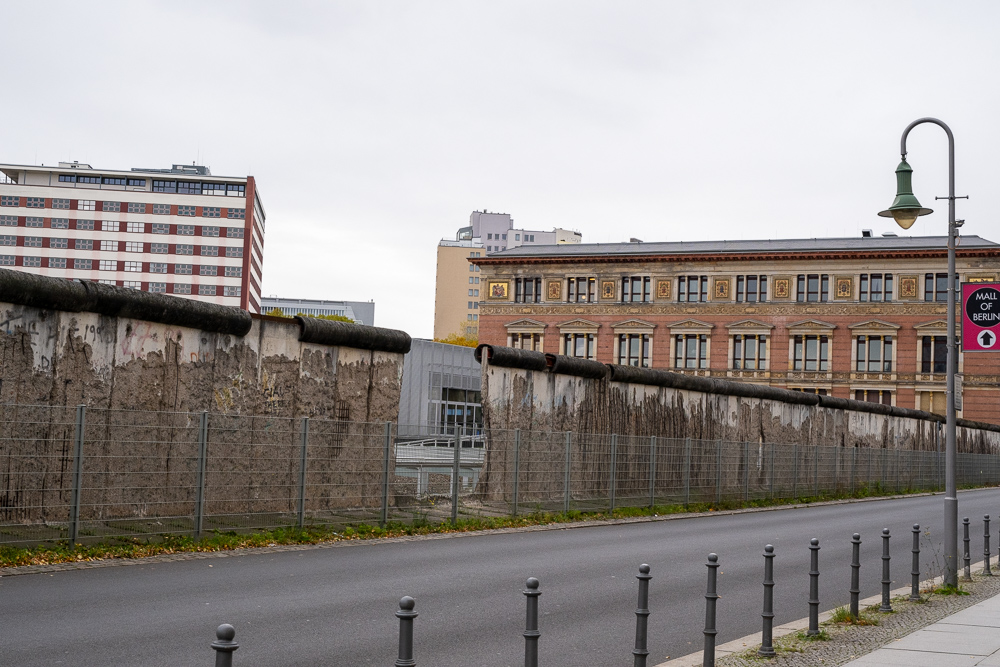
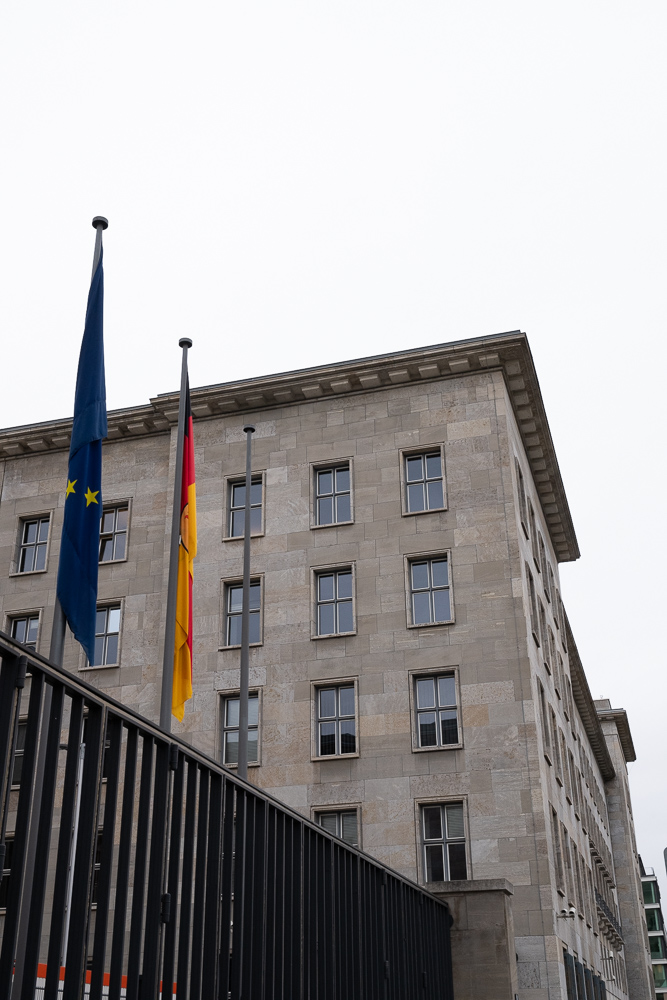
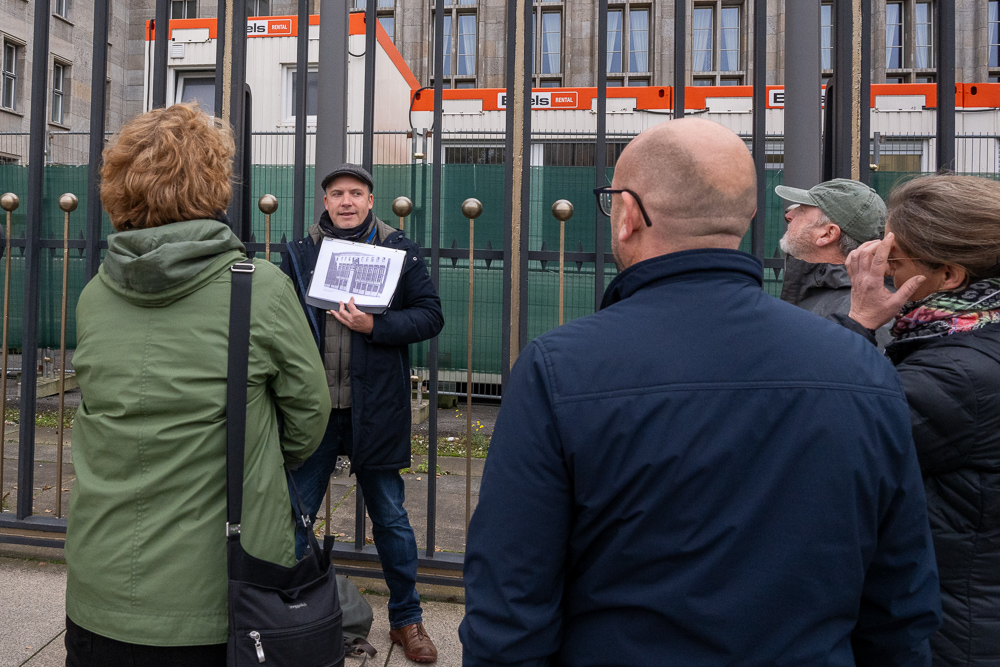
After finishing at BAUDENKMAL BERLINER MAUER (Berlin Wall Monument), we walked past the BURNDESMINISTERIUM DER FINANZEN. This is one of the only remaining examples of Nazi architecture that remains in Berlin.
It was – I can’t put it into words.
We walked past the building and I took photos. I didn’t have time in the moment to truly reflect on the presence of the building. But, once we arrived at the most famous car park in the world, it all hit me.
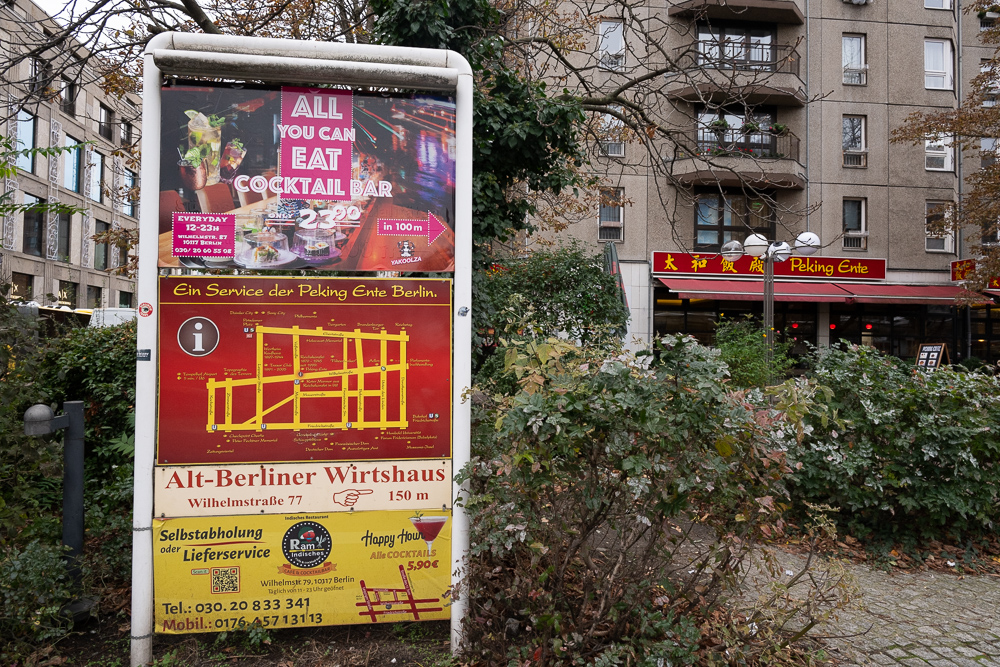
When we arrived at the FÜHRERBUNKER, my mind couldn’t truly process that I was standing above the remains of Hitler’s bunker.
It truly felt surreal.
It was a powerful moment of reflection.
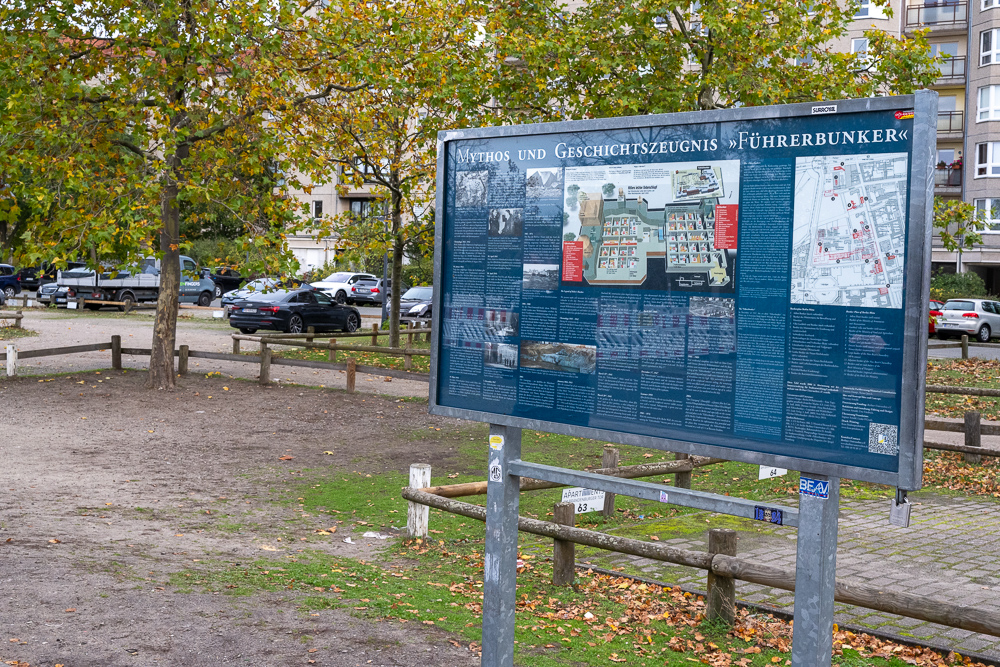
Here, Jasper told us a story about Hitler’s remains.
After Adolf Hitler’s death by suicide in his bunker in Berlin on April 30, 1945, his body, along with that of Eva Braun, was discovered by his staff and later identified by the Soviets. In an attempt to prevent Hitler’s burial site from becoming a place of pilgrimage for his followers, the Soviet authorities secretly disposed of his remains. In 1970, the KGB revealed that in 1945, they had exhumed Hitler’s remains, cremated them, and scattered the ashes in an undisclosed location.
However, Jasper also told us that the remains were reburned and in April of 1970, were thrown into the Biederitz river, which is a tributary of the Elbe river. When I inquired about conspiracy theories, Jasper told us that Hitler’s jaw and a section of the skull – where he shot himself – were currently at the Kremlin, hidden from public view.
Wouldn’t surprise me in the slightest.
We then walked over to the MEMORIAL TO THE MURDERED JEWS OF EUROPE. The Memorial to the Murdered Jews of Europe, also known as the Holocaust Memorial, is a poignant and somber monument in Berlin dedicated to the memory of the six million Jewish victims of the Holocaust. Designed by architect Peter Eisenman and inaugurated in 2005, the memorial consists of 2,711 concrete slabs of varying heights arranged in a grid pattern over a sloping field. As visitors walk through the maze-like structure, the stark and disorienting nature of the monument is meant to evoke a sense of isolation, loss, and the overwhelming scale of the tragedy.
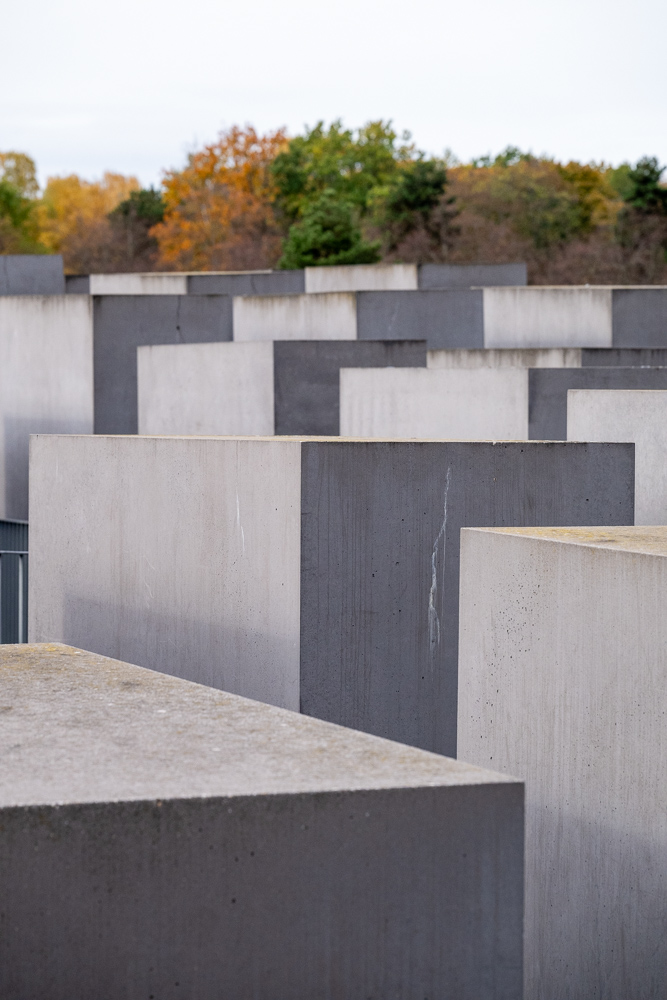
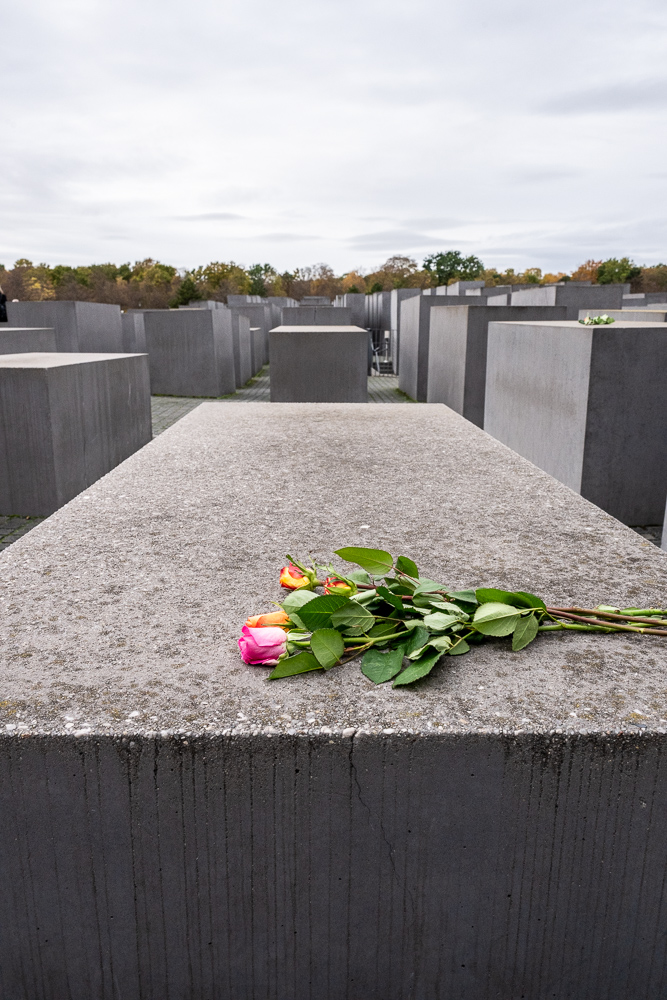
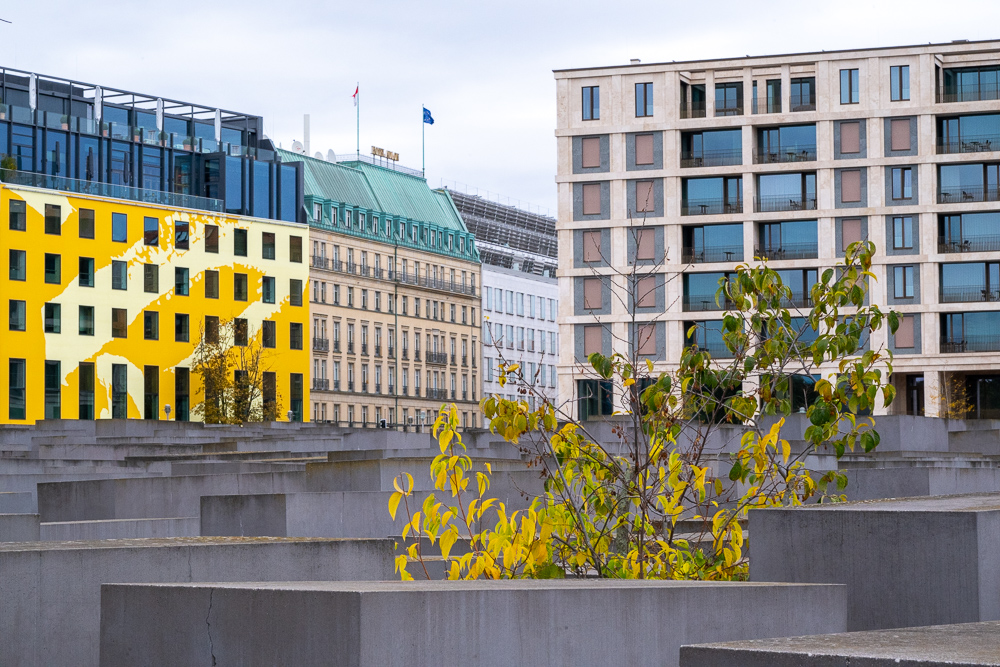
The memorial’s location near the Brandenburg Gate and Reichstag symbolizes its significance in the heart of the German capital. The Field of Stelae, as it is officially called, stands as a powerful symbol of remembrance, reflection, and collective responsibility. The subterranean Information Center, located adjacent to the memorial, provides further context and historical background on the Holocaust. The Memorial to the Murdered Jews of Europe serves as a lasting tribute to the victims of one of the darkest chapters in human history and encourages visitors to engage in contemplation and remembrance of the atrocities committed during the Holocaust.
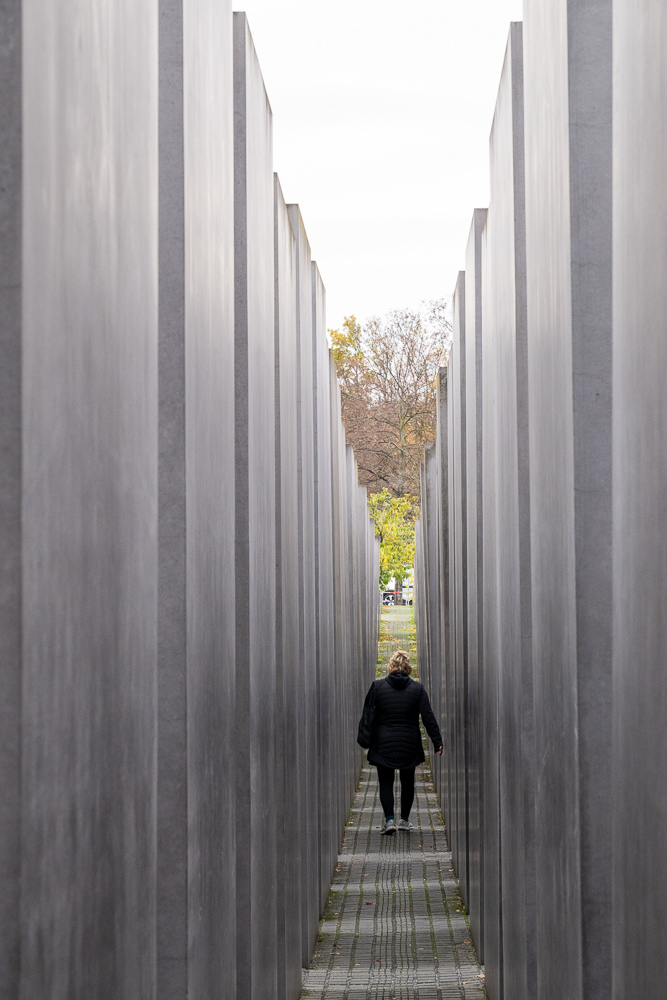
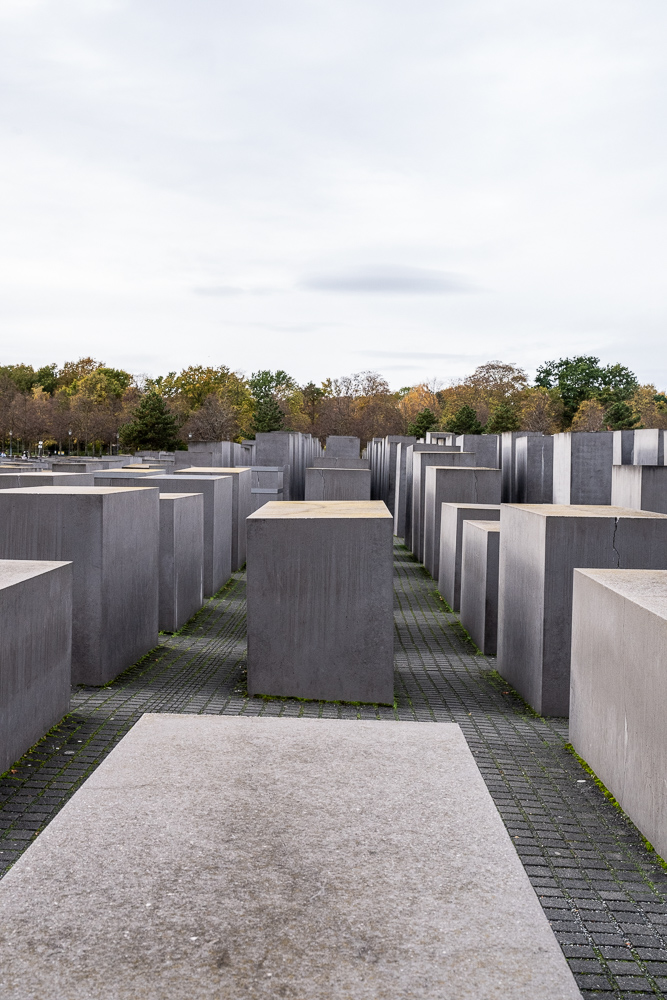
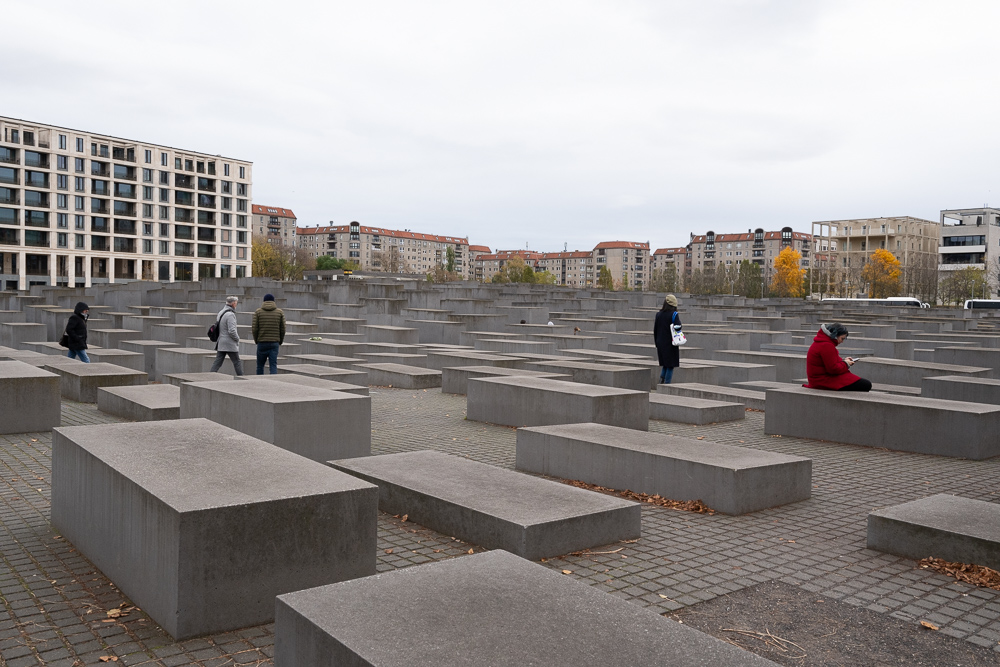
We finished at the BRANDENBURG GATE, which was magnificent. The Brandenburg Gate, located in the heart of Berlin, Germany, is an iconic neoclassical monument that has witnessed significant historical events throughout the centuries. Constructed between 1788 and 1791 by architect Carl Gotthard Langhans, the gate served as a symbol of peace and was inspired by the Acropolis in Athens. Originally, it marked the entrance to the boulevard Unter den Linden and was commissioned by King Frederick William II of Prussia.
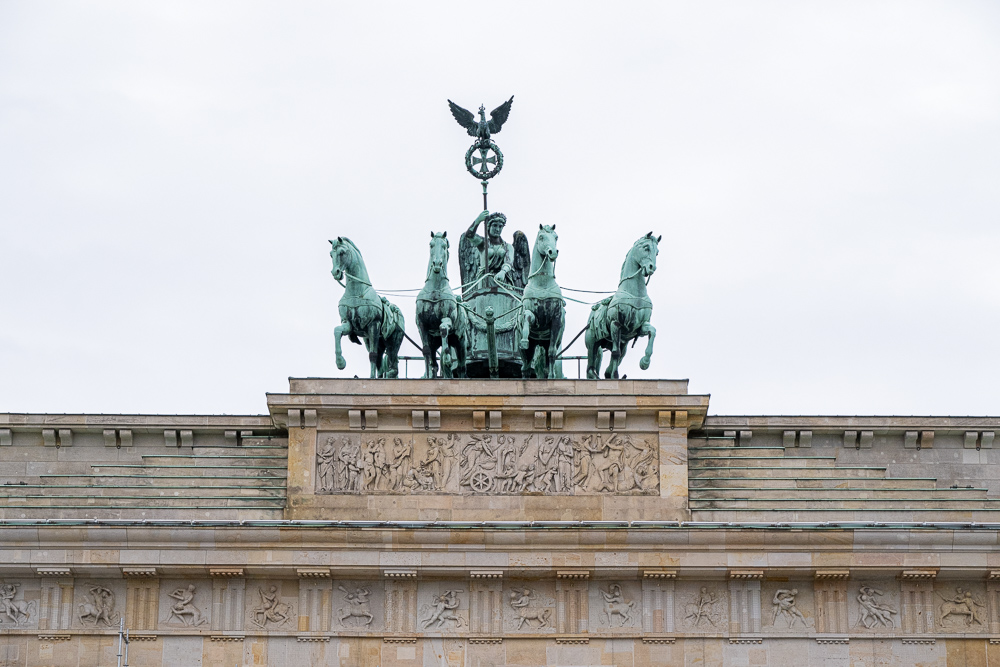
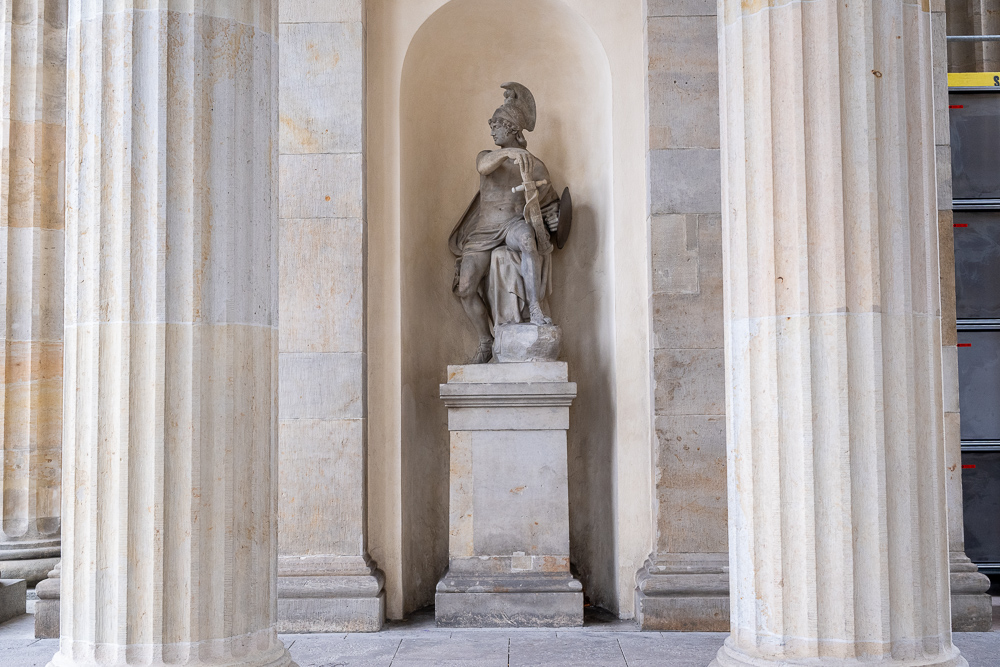
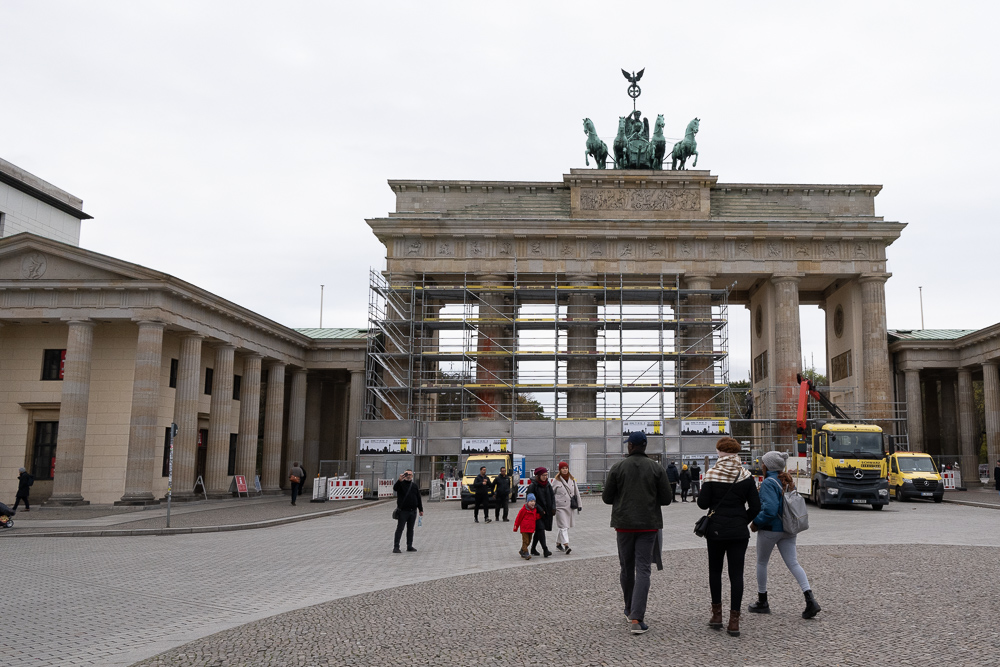
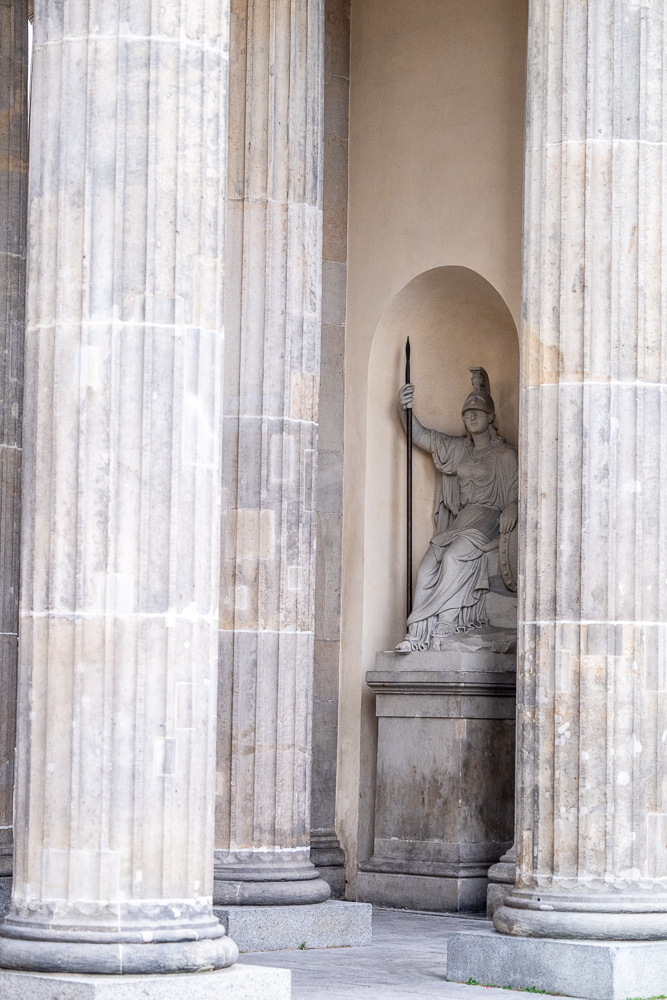
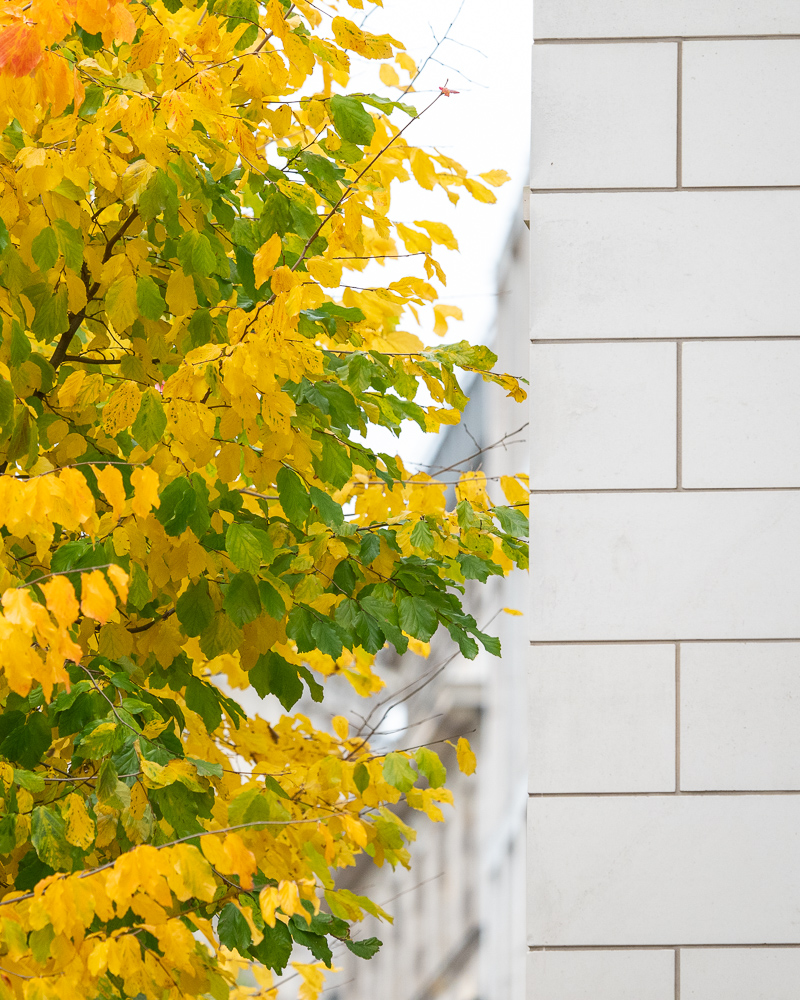
Over the years, the Brandenburg Gate became a symbol of German unity and freedom. It played a prominent role during the Cold War when the Berlin Wall divided the city. The gate stood in the no man’s land between East and West Berlin, becoming a powerful symbol of the divided nation. Following the fall of the Berlin Wall in 1989 and the reunification of Germany in 1990, the Brandenburg Gate became a focal point for celebrations and events.
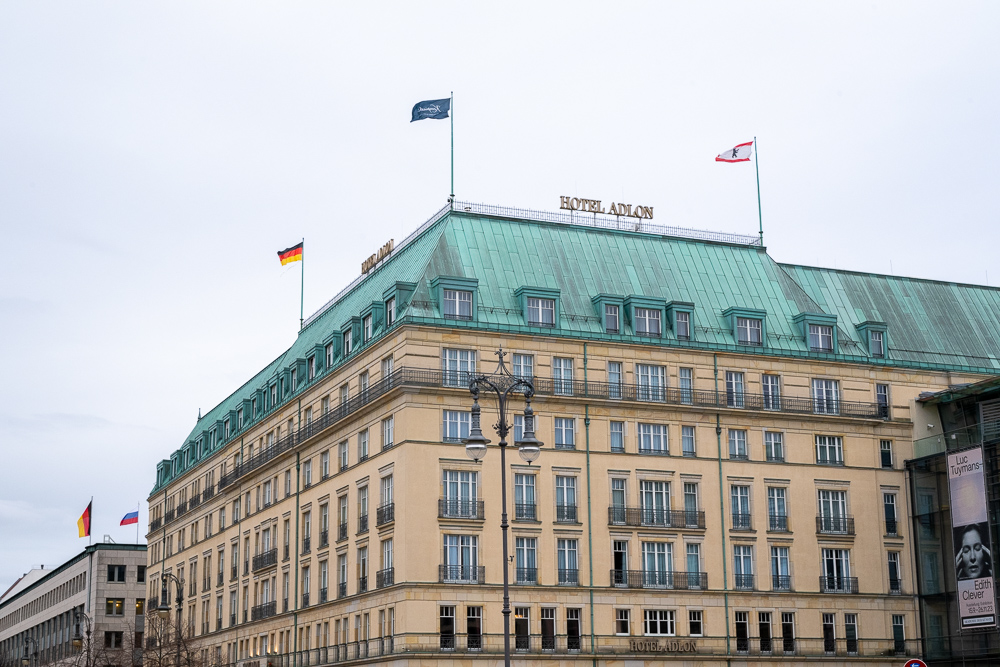
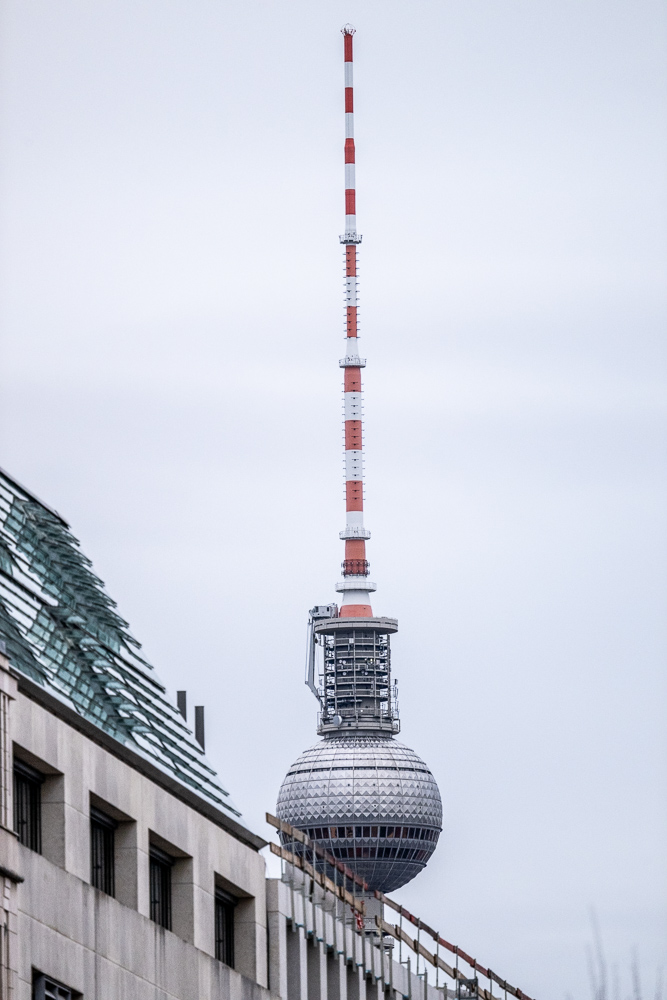
As I walked from the gate to REICHSTAG BUILDING and then through the TIERGARDEN back to Grand Hyatt Berlin, I was enraptured with the beauty and history of Berlin. Yes, the 20th century brought tumultuous changes to Berlin. It was a focal point during both World Wars, witnessing the rise and fall of the Nazi regime and enduring extensive destruction during Allied bombings in World War II. TheGerman reunification in 1990 allowed Berlin to grow and transform into a vibrant and dynamic metropolis, known for its cultural diversity, arts scene, and historical landmarks, serving as a testament to its resilience and the spirit of its people.
Walking the path through the garden and feeling the ghosts of the past, I realized the powerful effects of acknowledging your past and being committed to change.
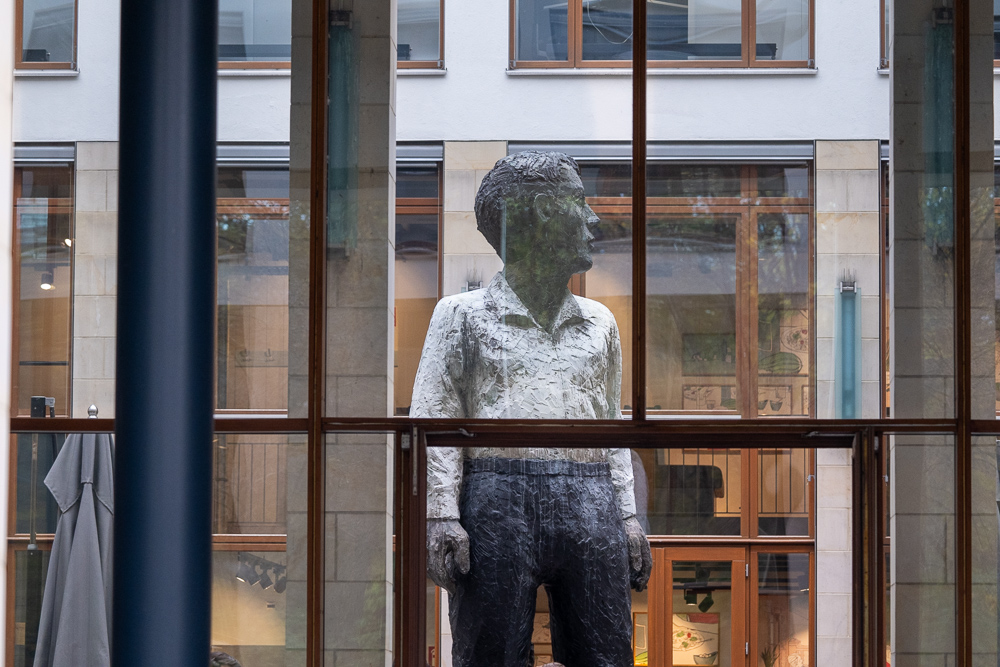
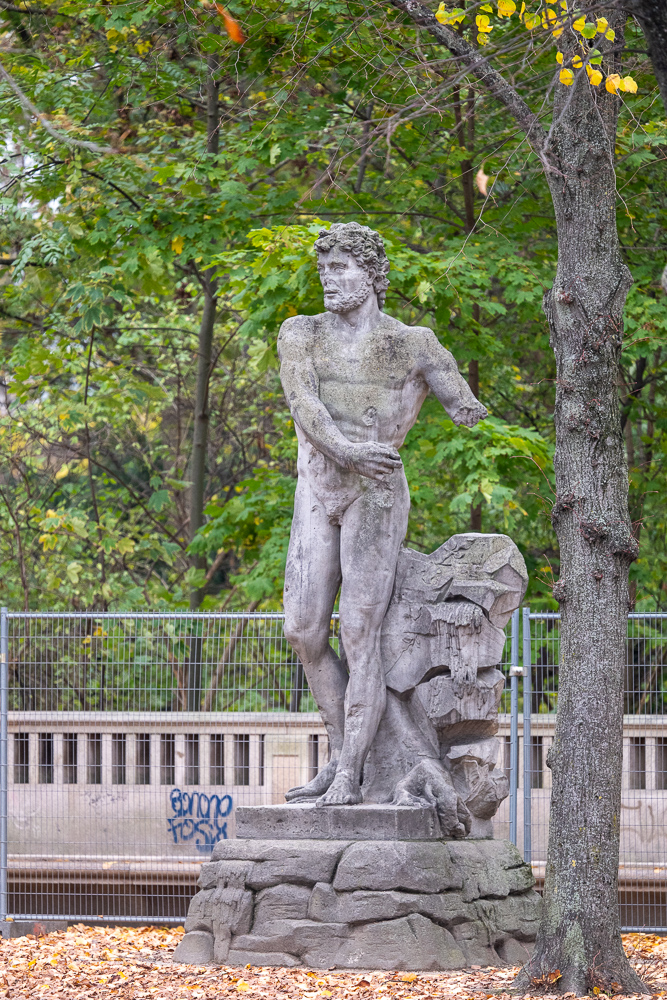
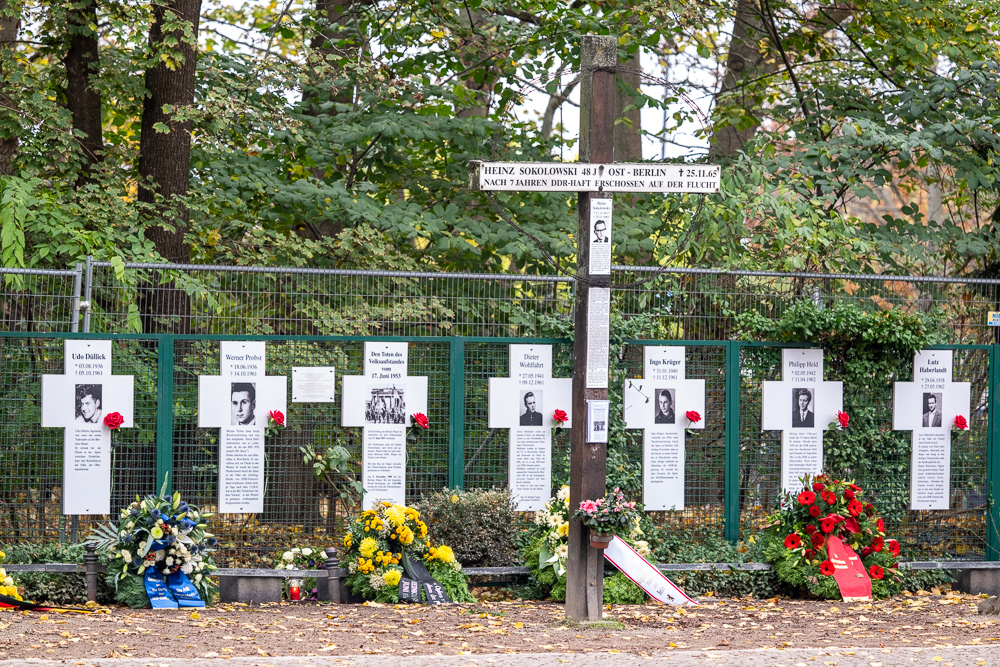
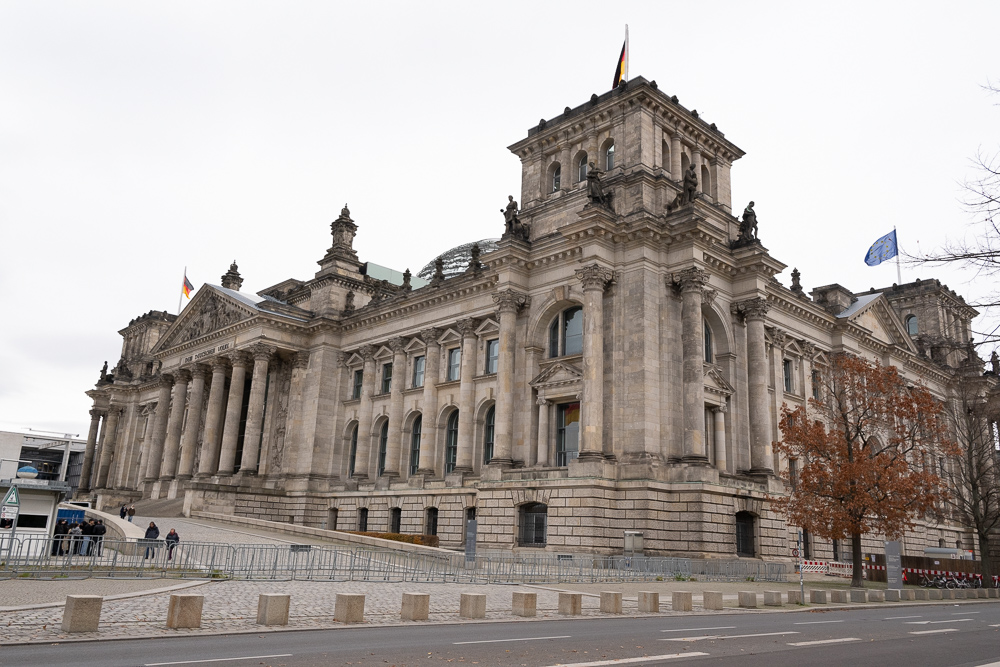
Truly, the “Berlin: Highlights of Berlin Walking Tour” by Insider Tours with Get Your Guide was an absolutely wonderful tour. It showcasing the best of Berlin’s present, past and future.
More importantly, it allowed me time to take photos and reflect on Germany’s history. and influence upon the world.
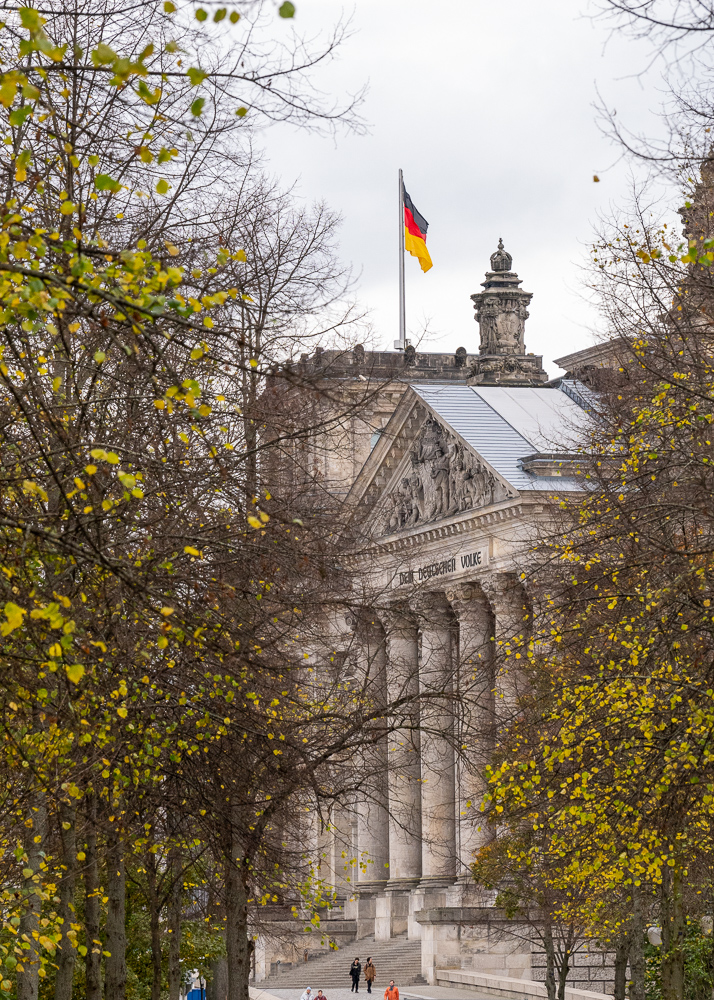
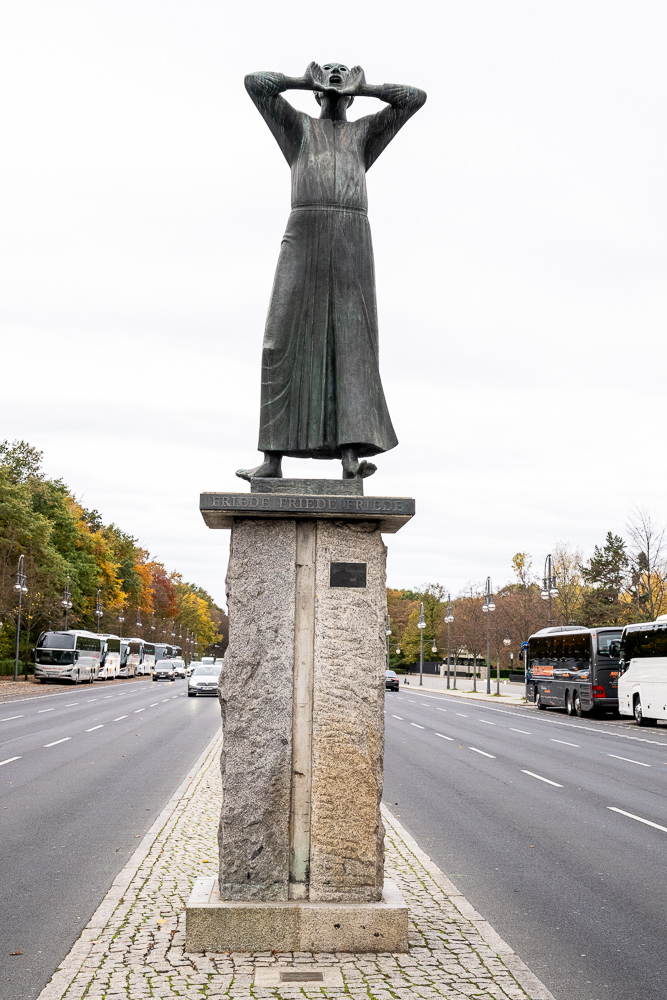
Berlin: Highlights of Berlin Walking Tour with Get Your Guide
Reichstagufer 1710117, Berlin Germany

